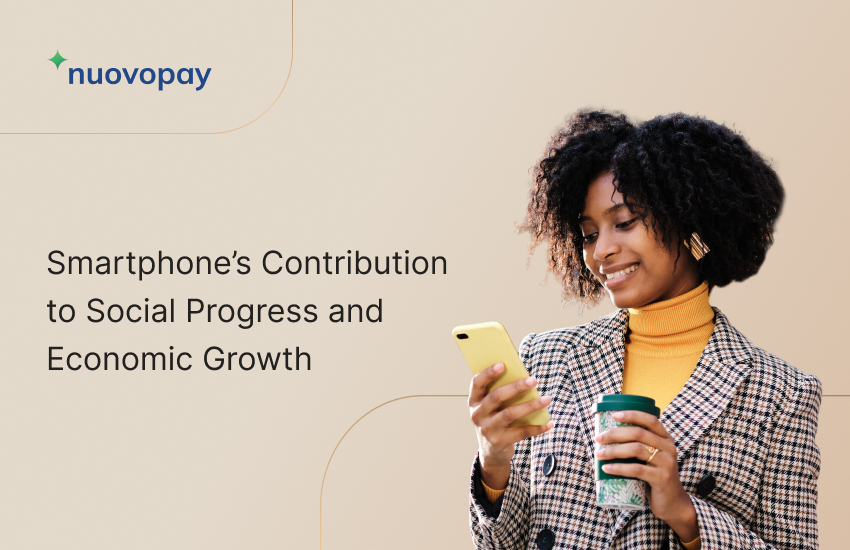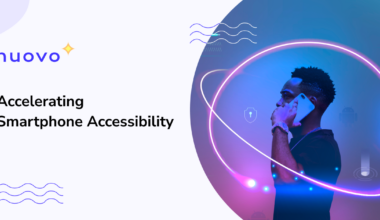If you ask Google what Social Progress is, it’d say “the capacity of a society to meet the basic human needs of its citizens, establish the building blocks that allow citizens and communities to enhance and sustain the quality of their lives, and create the conditions for all individuals to reach their full potential.” And today, one of these basic needs is the internet.

In fact, the United Nations has declared internet access a basic human right [1]. The organization further emphasized that disconnecting individuals from the internet violates basic human rights.
Over the past three decades, worldwide use of the internet has increased exponentially, with billions of people connecting and sharing information. And mobiles have played an important role in enabling the internet for the masses. For billions across the globe, mobile phones are more than just useful communication devices: they are the only means of accessing the internet, the only way of accessing education and healthcare services, and a vital tool to achieve social progress.
Social Impact of Smartphones
One of the building blocks of social well-being today is access to information and communication: mobile phone subscriptions and mobile internet coverage. In emerging and underdeveloped nations, mobile technology—smartphones and the internet—has become a powerful tool to improve the quality of life. Mobiles have leapfrogged to help individuals and communities in many more ways than personal computers can ever can, including services that improve and maintain social quality of –
1. Health
Getting medical devices to diagnose people living in remote places can be a logistical nightmare in underdeveloped countries. The portable nature of smartphones makes patient diagnosis and monitoring possible in resource-crunched regions. For instance, Peek Acuity is a smartphone-based vision check app developed for healthcare professionals to carry out vision tests. The app uses the camera in a smartphone to check the vision of a patient, assisting with the early diagnosis of blindness caused by parasitism or other ailments. Field workers work with ophthalmologists to determine what conditions are treatable at a local level and which patients need transportation to a hospital.
2. Literacy and Education
Education in underdeveloped regions struggles to cope due to various reasons: the shortage of new teachers, high concentration of illiterate adults, and lack of physical infrastructure put learning under stress. While education struggles, mobile communication has grown exponentially. For example, projects such as the Worldreader, a non-profit founded by ex-Microsoft and Amazon employees, have created a platform for ebooks on feature phones and inexpensive smartphones. Through the app, families, and teachers can get children to read books with full comprehension.
3. Banking
In Africa, where physical infrastructure remains a challenge, millions of Africans are using mobile phones as banking instruments. People are using mobile banking services to make and receive payments and send money to their families. Telcos have developed mobile wallet services in African countries with poor infrastructure and created a thriving mobile money ecosystem.
Learn More: What is Digital Lending?
Economic Impact of Smartphones
The growth in mobile data consumption has a positive relationship with economic growth. And smartphones have contributed to economic globalization and growth as they have been adopted at unprecedented rates.
Highlights[2]
- By the end of 2021, 5.3 billion people had subscribed to mobile services. That’s 67% of the global population.
- In 2021, mobile technologies and services generated 5% (USD 4.5 trillion) of global GDP.
- The mobile ecosystem supports 26 million jobs (directly and indirectly)
The following are a few ways in which smartphones have contributed to economic development around the world.
1. Creation of “App Economy”
App Economy refers to economic activities stemming from the development and distribution of mobile apps and games. Mobile apps include key use cases such as shopping applications, home banking programs, smart automobile interfaces, healthcare apps for monitoring patients, educational apps, and sophisticated apps for running manufacturing plants.
The growth of the App Economy workforce in a country reflects how quickly the country is embracing the next stage of the Information Revolution. As people continue to use mobile apps daily in work and personal life, it’ll create a consistent demand for information and communications technology (ICT) jobs.
In fact, in India, the iOS ecosystem includes 873,000 jobs, and the Android ecosystem includes 1.359 million jobs. [3]
2. Smartphones Increasing Communication
Mobile internet coverage is far more practical than broadband and data lines, helping bridge the technology and infrastructure gap in the developing world. One of the major benefits of internet-enabled smartphones is the ability to communicate with ease.
Slowing Progress: Smartphone Affordability
Certainly, one of the most important features of a smartphone is the ability to connect to the Internet, enabling users to remain online regardless of time and place. One major barrier to mobile usage in emerging economies has been the high price of smartphones. However, this is changing quickly.
Manufacturers are lowering pricing dramatically, but the average selling price remains high for many consumers from emerging markets. To make smartphone ownership affordable, retailers, telcos, and non-banking financial institutions have introduced smartphone financing options.
But consumers may fail to make timely payments. Companies may face more risk of bad debt when customers default on payments during the contract. Using smartphone locking technology can help mitigate smartphone financing risks.
Learn more: How to get Smartphone Loan?
Wrapping Up
It’s pretty visible that life before and after smartphones have seen drastic changes. Mobile connectivity has empowered people at an individual level, which has led to macro-level consequences. It has demonstrated the ability to drive socioeconomic advancement, but realizing it for all requires the affordability of smartphones and digital services.
Governments, private organizations, or non-profits who can derive value from increased access to the internet can subsidize or offset handset costs. Alternatively, consumers can access smartphone financing from financial institutions. This allows customers to obtain smartphones even when they cannot afford the handset upfront. Mobile phones are affordably and effectively influencing people to make social growth inevitable.





